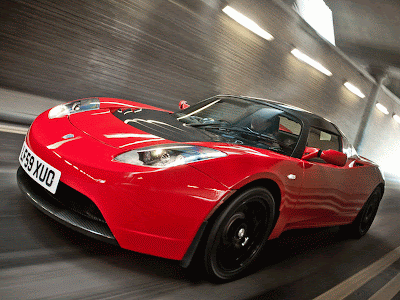
The X-Type is a compact executive car which was produced between 2001 and 2009 by Jaguar. As the smallest of the Jaguar model range, with saloon and wagon variants, the X-Type was the only estate ever manufactured in series production by the company. Models were manufactured at the Halewood assembly facility near Liverpool, a Jaguar Land Rover plant which also produces the Land Rover Freelander. Codenamed X400, the X-Type was Jaguar's first compact 4-door saloon. The X-Type was one of the last to be styled under the supervision of Geoff Lawson, with the principal designer credited as Wayne Burgess. The X-Type was based on a modified version of the Ford CD132 platform shared with the 2000 Ford Mondeo. To distinguish it from its rivals and its Ford origins, the X-Type was initially offered as all-wheel drive only and mated to a 2.5 litre and 3.0 litre AJ-V6 petrol engine. In 2003, the X-Type was offered in front-wheel drive with the introduction of Jaguar’s first four-cylinder diesel engines (based on the Ford Duratorq ZSD unit from the Mondeo and Transit), and with the smaller 2.0 litre petrol V6.

n 2004, a further body style was added with the introduction of an estate version, making it the second-ever Jaguar estate car. In North America, the estate was officially known as the "Sportwagon”. It was the first version of a Jaguar designed by Ian Callum.In 2004 the Spirit limited edition model based on the 2.5 V6 featured the 'Sports Collection' pack with new spoilers and rear valance. It was followed in 2005 by the XS limited edition, which continued the sports theme, but available with a wider range of engines. The X-Type received minor modifications to its grille design for the 2004 and 2006 model years, and a fuller facelift of the front end for the model year 2008, which included a redesigned front bumper and an overall look that echoed the 2008 Jaguar XF. New engine choices included a 2.2 litre diesel with particulate filter, in addition to 2.0 diesel, 2.5 V6 petrol and 3.0 V6 petrol engines. The 2008MY vehicle was unveiled at the 2007 Canary Wharf Motorexpo. The revised X-Type went on sale internationally during 2008, with UK sales from March. Significant changes included:
* New six-speed automatic transmission and Jaguar Sequential Shift on 2.2D
* New mesh grille featuring the Jaguar ‘growler’ badge, in the style of the new XJ. with new front and rear bumper design
* New door mirrors with integrated turn indicator repeaters

Jaguar has announced plans to unveil a successor for the X-Type to be unveiled in 2012 and to compete with the BMW 3-Series, and to be positioned below the current XF. Interviewed in November 2000, managing director Jonathan Browning said Jaguar's objective was to achieve annual sales of 100,000 with the car, partly by taking market share from established German rivals and partly by expanding the market segment in Jaguar's key markets. The X-Type was Jaguar's best-selling model during almost all its production run,[10] but sales did not met projections, peaking at 50,000 in 2003. In the United States, the car's primary market, sales dropped from 21,542 in 2004 to 10,941 in 2005. In the same year, Audi sold 48,922 A4s, BMW sold 106,950 3-series and Mercedes-Benz sold 60,658 C-classes. Ford's decision to use a modified version of the Ford Mondeo platform (shared with the Land Rover Freelander compact crossover SUV which is also produced at Halewood) for the Jaguar X-Type wasn't received well by some enthusiasts of the marque. TIME magazine described the X-Type as the "British Cadillac Cimarron" in its "50 Worst Cars of All Time" list, suggesting its badge-engineered made it unpopular. Numerous car magazine and website reviews were largely positive for the X-Type, especially during the early years of its introduction. In reality, the X-Type used only 18% of Ford Mondeo's components, while a variety of Ford platforms, engines and components were being used by all models of the Ford Motor Company's luxury brands in that period, namely Aston Martin, Jaguar and Lincoln. In 2008, Jaguar director of design Ian Callum said that, despite management denials at the time, the slow-selling X-Type “was essentially designed in Detroit and presented as close to a fait accompli to reluctant designers and engineers at Jaguar's Whitley design centre." The facelifted model was expected to continue through to the 2010 model year in its remaining markets, and not to be directly replaced. On 15 July 2009, Jaguar Land Rover announced that it would cease the production of the X-Type at the end of 2009, with the loss of 300 jobs, and have a three-week shut down, at their plant in Halewood where the car was built, between September and December. By this time more than 350,000 had been produced. Jaguar X-Type won AutoWeek's Editors Choice Award as the Most Significant Car at the Geneva Motor Show of 2001.


No comments:
Post a Comment